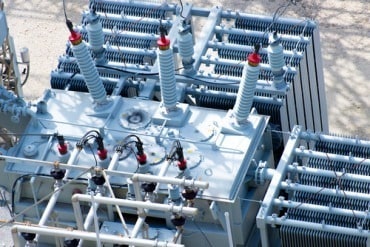
Companies can leverage edge computing to help reduce their ecological footprint.
As companies move to the cloud for more efficient operations, concerns about the environmental impacts of such centralized processing are surfacing. More data centers are moving to greener practices, but one alternative could provide even more fuel for the sustainability movement—edge computing.
Digitalization has made life and business more convenient, but these processing centers require enormous resources to function. They’re contributing to carbon emissions and producing electronic waste, adding to the burden humans put on the environment in pursuit of advancement.
This doesn’t mean all is lost. More organizations have already tied sustainability components to key performance metrics, and many have signed pledges to reduce their footprint on the environment. Data centers have begun to adopt more green practices, something that could help cut costs in the long run. New advancements in efficient processing and data storage promise to help ease the burden.
Some of these green(er) practices include:
- Using renewable energy to power the data center activities.
- Heavy investment into state-of-the-art cooling and ventilation that reduces power consumption.
- Embedding smart building tech and engaging machine learning to optimize building operations.
However, these can only do so much when traffic continues to increase the processing load on cloud servers.
See also: Actioning Sustainability: How Tech is Making ESG a Reality
What is edge computing?
Edge computing processes data closer to the device that captures it. Instead of sending everything to a central location, i.e., the cloud, data stays close to the sensor or is processed directly through the sensor itself.
It essentially uses the same technology stack as a cloud server but shrunk down to fit on a single (very small) device. Not everything can process on such a restricted stack, but it can help limit the amount of processing power required for applications that are compatible.
This reduces unnecessary cloud traffic and reduces processing load and storage resources. Gartner predicts that as little as 25% of enterprise data will head to a centralized cloud by 2025. Considering data centers alone count for 2% of the world’s electricity resources today, this is significant.
Why edge computing is a key piece of sustainability
In some cases, edge computing can improve speed and performance by keeping processing close to the device, helping reduce costs and provide more efficiency. But there are other reasons companies should be looking to the edge to help reduce environmental impacts.
Reducing network traffic
The edge helps reduce the networking traffic coming in and out of centralized servers, reducing bandwidth and energy drains. This frees up bandwidth at the data center itself and bandwidth for the organization in terms of any centralized servers on-premises.
Data that does need processing in the cloud tends to be more useful data, limited by the constraints of the edge device itself. The device handles what it can and sends only the most critical data (if any) to the cloud. These natural limitations prevent unnecessary processing or sprawl.
Many companies can utilize existing devices
Companies move to the cloud to help avoid significant upfront investment in equipment. With edge, many companies have already deployed sensors and devices that are currently underutilized.
By moving data processing back to the edge instead of sending everything to the cloud, companies reduce their dependence on the central cloud and their contributions to energy drains.
Edge computing is made for efficiency
Resources on edge devices are naturally restricted by the device’s hardware. Every single piece of an edge stack is optimized to work efficiently. Many can run even without a continued internet connection, allowing processing to continue offline. This helps reduce energy consumption overall.
Examples of edge computing in the real world
Organizations are realizing the power the edge has in their sustainability goals. Some recent examples are the following.
Chicago Smart City Lighting helps reduce energy
The city of Chicago implemented a smart lighting system leveraging sensors and edge computing to help reduce energy and improve the efficiency of repairs. Each new light receives a more energy-efficient bulb plus a sensor that detects when a light fails. It automates repair tickets and scheduling.
Walmart reduces dependence on centralized cloud servers
A few years ago, retail giant Walmart launched an initiative to turn each of its stores into data centers primed for edge computing. It currently employs a hybrid system designed to leverage both centralized cloud services but can switch to its own local servers to reduce reliance on the cloud itself. It currently has at least 10,000 edge nodes across the company, which help reduce costs while boosting performance—all without relying too heavily on centralized data centers.
FedEx, Dell, and Switch repurpose existing real estate
In an example of leveraging what’s already there, FedEx partnered with Dell and Switch (a data center provider) to use existing FedEx locations to house edge computing hubs. Users will be able to process data much closer to their location thanks to the ubiquity of FedEx centers, reducing dependence on centralized servers without having to build anything new.
Even further, FedEx is also the first consumer of its own edge nodes. It will utilize them to run intelligent robotics applications and IoT sensors to automate critical pieces of FedEx operations.
Edge computing’s role in sustainability can expand
Companies can leverage edge computing to help reduce their ecological footprint. Cloud computing has many benefits, but the trade-off is increased resources for processing and maintenance. Mixing edge computing into the mix can help operations continue to run smoothly while integrating more sustainable practices.
As edge computing devices become more efficient, the benefits may grow. And if companies continue to shift more of their resources to the edge, it may make leveraging technology a less resource-intensive pursuit. Time will tell.





























